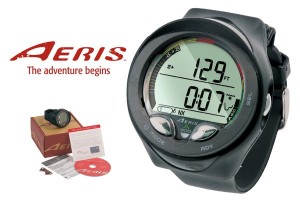Trelleborg AB is a multinational industrial company based in the town of Trelleborg, Sweden. Historically they produced a variety of rubber products; including tires, boats and assorted leisure goods. However, these products are now available far cheaper from Asia and so Trelleborg, instead, focuses on advanced products such as protective suits, high-pressure vaults, and specialised tubes for submarines and airplanes. From their own History page:
Trelleborg products are found in a wide variety of contexts worldwide. They seal, damp and protect, both in everyday settings and under extreme conditions.

A Viking wearing a Viking: Robert Hedin, Commercial Diver
If, like my friend Rob, you are a commercial diver (or indeed a hazmat, military, fire & rescue or law-enforcement diver), then you will likely be intimately familiar with at least a couple of Trelleborg’s range of Viking Drysuits, as these are now the industry’s standard. They are impermeable, durable suits that can be used in a wide range of environmental conditions where there exist set standards for safety—they are extremely abrasion-resistant, will protect a diver from any contaminants in the water and can be easily washed down and decontaminated afterward.
If, on the other hand, you are simply diving for pleasure and not intending on exposing yourself to any toxic waste, you should still be aware of the existence of vulcanized rubber suits*, particularly those with the Swedish Viking brand and specifically their old Sport and new ProVSN drysuits. The EPDM rubber of these suits is amazing stuff. If you cut one of the suits across its seam, you will see that there is actually no seam: the manufacturing process bonds the two separate layers so that they become one, which for you and I means… no leaks!
Viking Sport Drysuits
During the 1980′s Trelleborg introduced their Viking Sport drysuit, aimed at light technical and recreational divers. Although similar in appearance to their red and black commercial siblings, they are made from a lighter-weight rubber. These are no longer in production but can be purchased reasonably cheaply secondhand and, unlike crushed neoprene suits from the same era, will require little repair beyond new neck and wrist seals, if any, to get them back in action. Any repairs that you do need to make are as simple as patching the hole in the inner tube of your bike tire and can even be done hastily and temporarily in the field.
Viking ProVSN Drysuits
Towards the back end of 2009 Trelleborg released their new Viking ProVSN drysuit. I can’t say enough good things about these suits. The armatex nylon layers that sandwich the rubber central layer are stretchy and create a great-looking, comfortable suit that is available in front and back entry versions, with a variety of customisable features. Perhaps the only drawback of the suit is that the outer layer is permeable and so it is “problematic to decontaminate”—for most though, that is unlikely to be a problem.
What’s this about The Vulcans?
Vulcanization is a process best explained by someone else! So here is a link to a Google search: What the hell is vulcanized rubber?! The process makes rubber more durable and as far as a drysuits go this is great news; not only are vulcanized rubber suits incompressible (and so do not become less buoyant with depth) but they are also extremely hard wearing.
Who doesn’t like to see fellow human beings wearing rubber (or is that just me?)
 Scuba Diving News All ABout Scuba Diving; News, Products and Many More.
Scuba Diving News All ABout Scuba Diving; News, Products and Many More. 


